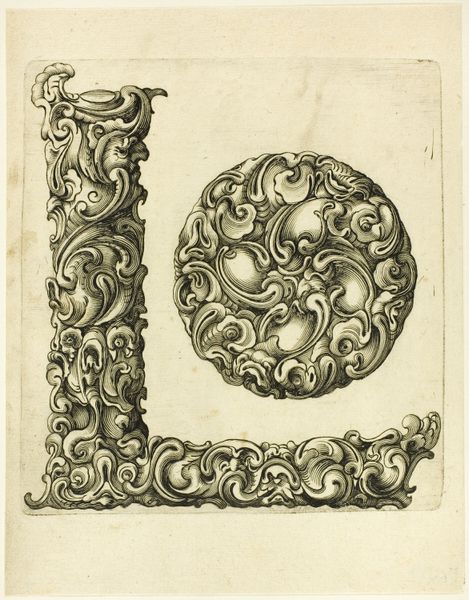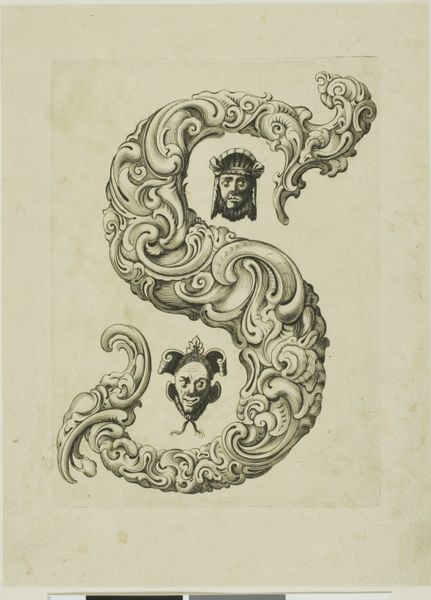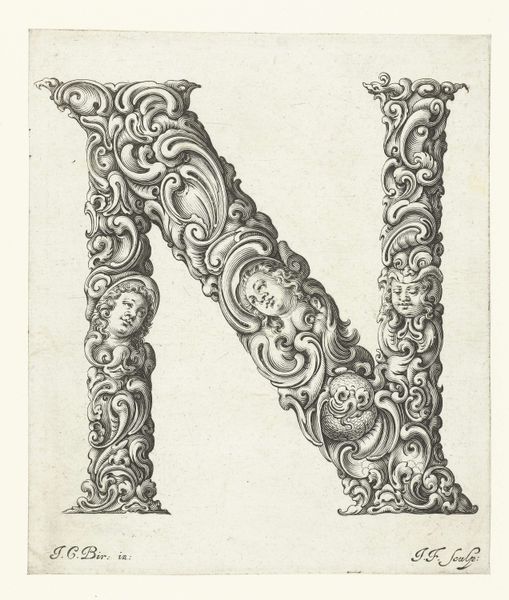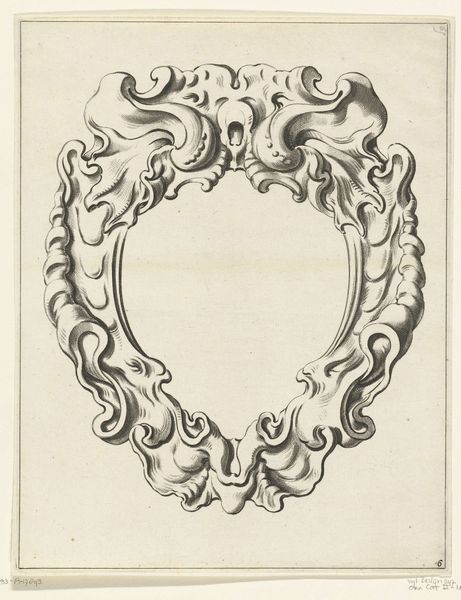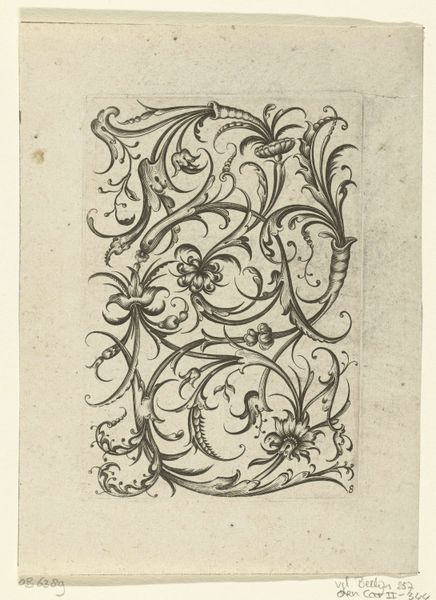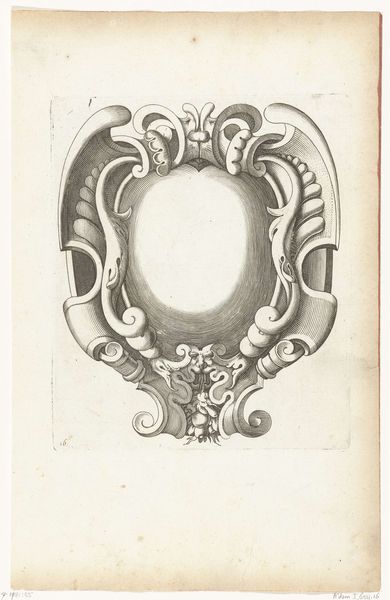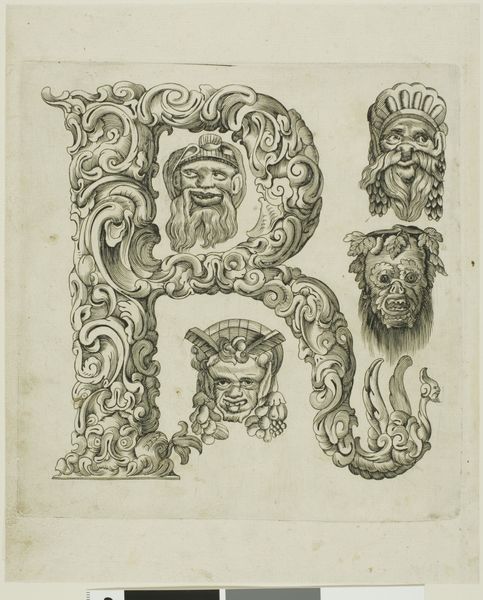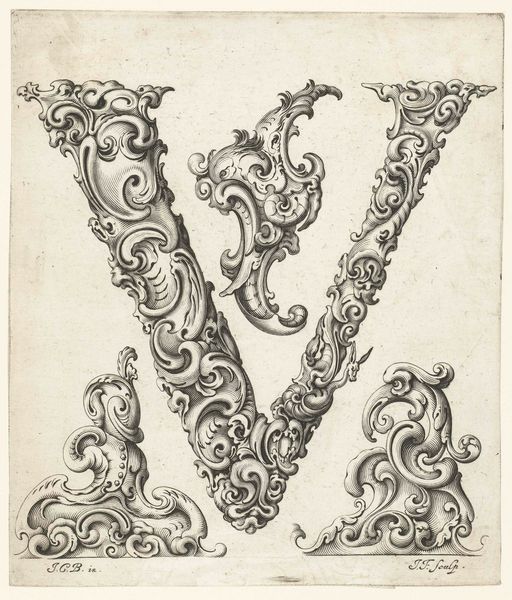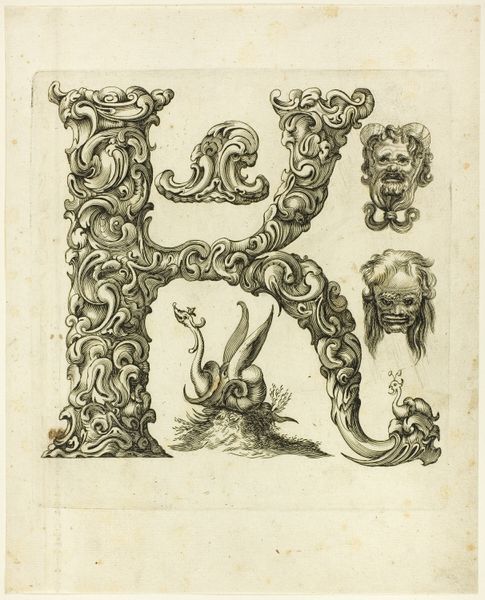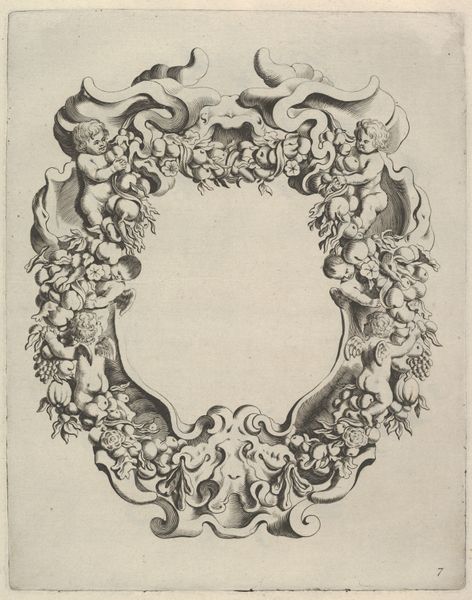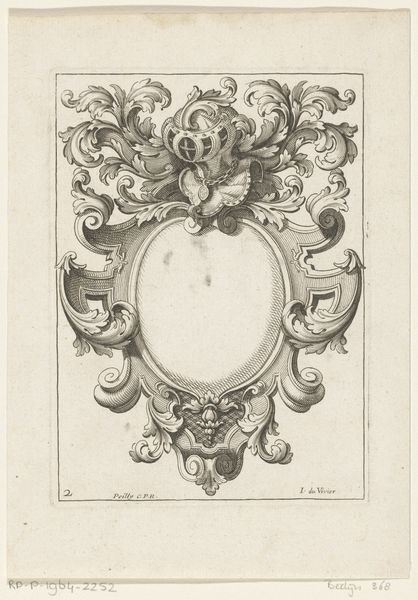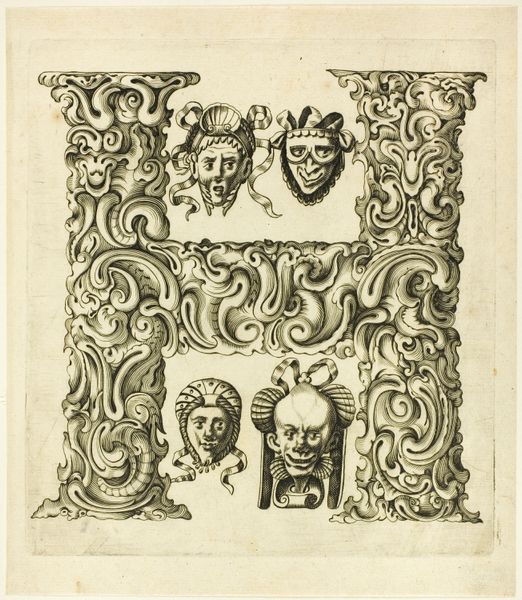
drawing, print, paper, engraving
#
drawing
#
baroque
# print
#
old engraving style
#
figuration
#
paper
#
form
#
line
#
engraving
Dimensions: 244 × 163 mm
Copyright: Public Domain
Curator: Oh, my! What a busy letter! I’m struck immediately by the almost aggressive level of ornamentation. Editor: Indeed! What we're looking at here is an engraving from 1630 titled “Letter P,” part of a series created by Peter Aubry, now held at the Art Institute of Chicago. Aubry was working in a period fascinated by detail and the exuberance of form, something very evident in this Baroque piece. Curator: Exuberance is putting it mildly! The letterform itself is overwhelmed by swirling foliage, shells, and grotesques. Then you have the two mask-like faces, both very different in expression. It is interesting the ways a letter could act as an expressive, image-bearing form. Editor: Absolutely. These ornamental letters weren't just about aesthetics; they reflected the status of printing and the book arts within a certain societal and political sphere. The intricacy of the design shows the skill of the engraver and, by extension, the wealth and refinement of the patron or owner of such a piece. It would have likely been one in a series of ornate letters to be assembled in sequence in special contexts. Curator: I can imagine this piece in dialogue with similar imagery over long stretches of time and throughout many illustrated books, acting as a cultural artifact of status. The masks themselves have this quality. I find their slightly unsettling quality intriguing – especially considering where each is positioned in relation to the main body of the letter "P." They act almost as psychological anchors within the swirling chaos of the Baroque design. Editor: I agree. And think about where and when it appeared. Early 17th century. Religious wars and emerging forms of social science—each fighting to describe the limits of the human. These ornamental flourishes act like a kind of exuberant, anxious boundary to an era about to define something totally new in its intellectual and institutional life. Curator: Seeing how form is often reflective of psychological expression... I now view that chaotic surface very differently. Editor: Exactly. These types of works really get you to reflect on the ways the smallest aspects of material culture encode whole sets of cultural priorities.
Comments
No comments
Be the first to comment and join the conversation on the ultimate creative platform.
